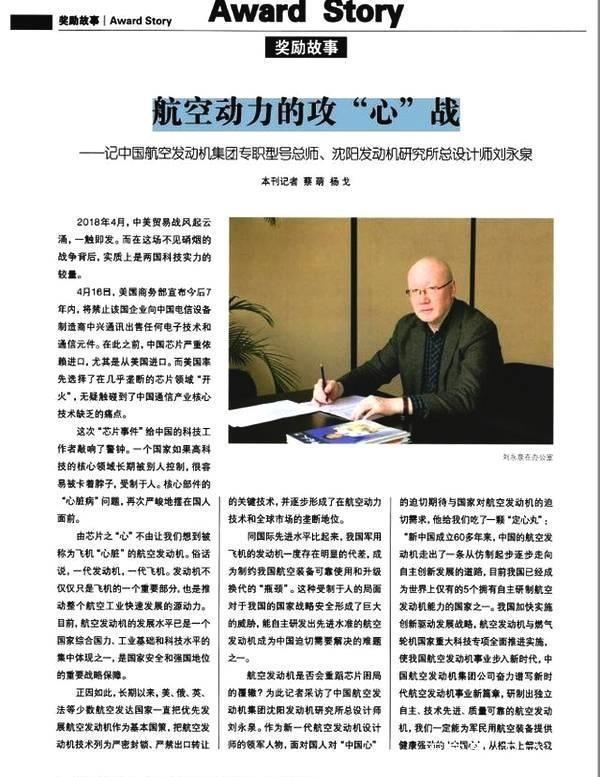(cont)
No comment on new deal
Behind the scenes, and despite the concerns of many Ukrainians and similarly-minded allies, some Kyiv lawmakers and the Chinese appear to have reached a quiet compromise.
On Feb. 21, Deputy Minister Brovchenko, who took part in the May 2018 talks with Kubiv, Ambassador Du Wei and officials from Beijing Skyrizon Aviation, announced that the Motor Sich deal, or some variation of it, was still going ahead.
In an interview with the Delo.ua website the deputy minister, when asked about the blocked Chinese attempt to buy a 56 percent stake in Motor Sich, suggested that the situation was being resolved and the investors from Beijing would still be brought on board.
“Chinese investors will have a certain stake,” he said, not elaborating on what the size of the stake would now be, or if it had already been confirmed. Brovchenko added that the state would work with the Chinese, who would have an important role in taking the company forward, “namely, in the development of aircraft construction and the production of helicopters,” he added.
He also said the state could take on a role, alongside the Chinese, in running Motor Sich. “I think that work is under way on the possible participation of the state in the operation of Motor Sich,” he said.
On Feb. 26, Motor Sich declined to comment or give an interview to the Kyiv Post. A secretary for the company’s public relations director refused to transfer any calls, instead requesting written questions that she said may or may not be responded to, as they pertained to stock transfers or acquisitions.
An employee in the company director’s office would not give her name and told the Kyiv Post “I am not going to tell you anything.”
The Kyiv Post has emailed questions to Motor Sich and requested an interview. Multiple, previous emailed requests for comment and attempts to arrange an interview have been unsuccessful.
The Chinese Embassy in Kyiv had not responded to an emailed request for comment by the time this story was published. Beijing Skyrizon Aviation could not be reached for comment.
Allies worry about China
China and Russia have a deepening, strategic relationship. China is Russia’s number one trade partner, with bilateral trade reaching an all-time high this January: more than $100 billion in that month alone.
Last year, Russian President Putin and Chinese Premier Xi Jinping formalized what is effectively a military alliance and pledged to greatly improve their cooperation on the international stage. They also agreed to at least $1 billion in new, joint investments abroad, affirming they would together face challenges of “strategic stability” together.
Some of Ukraine’s Western and Asian allies are very concerned with Chinese moves on Ukrainian aerospace. They have been vocal in their opposition, but it’s not yet clear if the Ukrainians are listening.
The Americans and the Japanese are especially worried about more Ukrainian aerospace technology falling into Chinese hands.
Last summer, as reported by the Kyiv Post, senior Pentagon officials were in the Ukrainian capital to deliver a warning to Ukraine that China wants to reverse-engineer and produce Ukrainian hardware on a large-scale.
Hanna Hopko, a member of parliament and the head of Ukraine’s Committee on Foreign Affairs, has also been outspoken about the potential deal, saying it’s damaging to Ukraine and its NATO allies.
“It’s extraordinary that we would allow a strategic partner of Moscow to acquire such sensitive and unique technology,” she said in June 2018.
Japan is also paying attention to Ukrainian-Chinese relations, especially if it could benefit the regional ambitions of the People’s Liberation Army.
Masaru Tanaka, an expert from the Bank of Japan who now advises the Ukrainian government through the Japan International Cooperation Agency, or JICA, said Japan has serious concerns over Chinese interest in Ukrainian aerospace technology. If the Chinese takeover of Motor Sich is to be pushed forward, despite the Ukrainian courts temporarily halting it, it must be stopped, Tanaka said in Oct. 2018.
“Chinese entities are acquiring and buying sensitive technology from Ukraine that threatens Japan,” he told the Kyiv Post. “We must stop the deal… the G7 must stop the deal.”
 Additional reporting by Igor Kossov.
Additional reporting by Igor Kossov.
